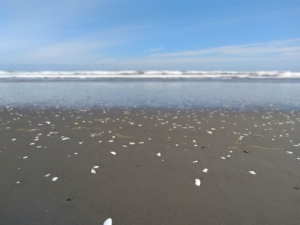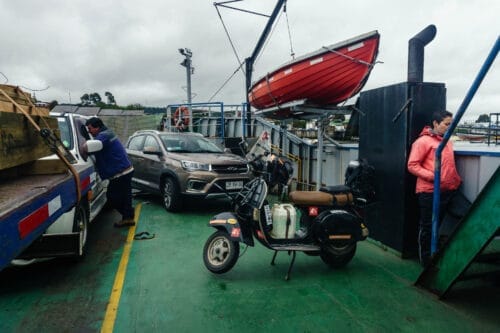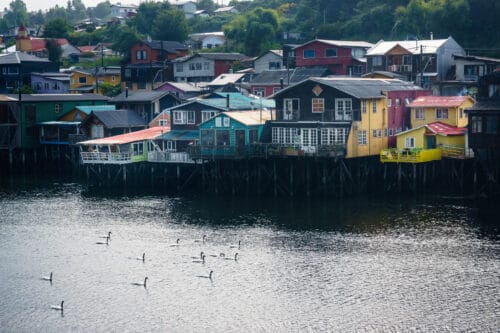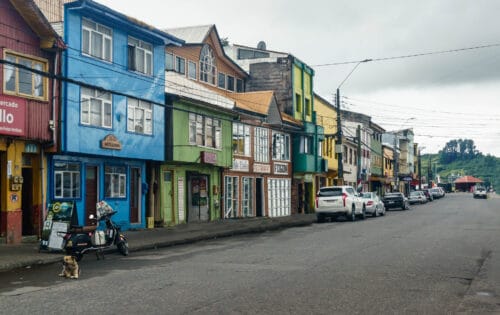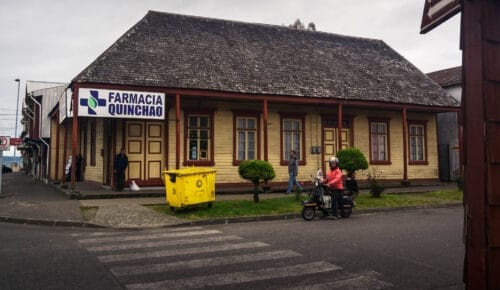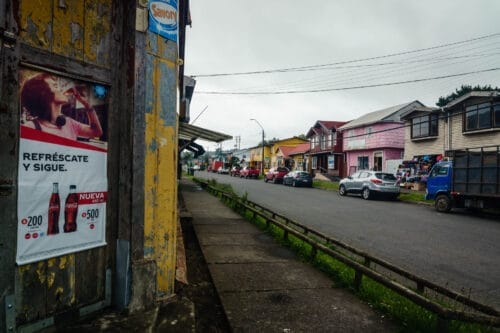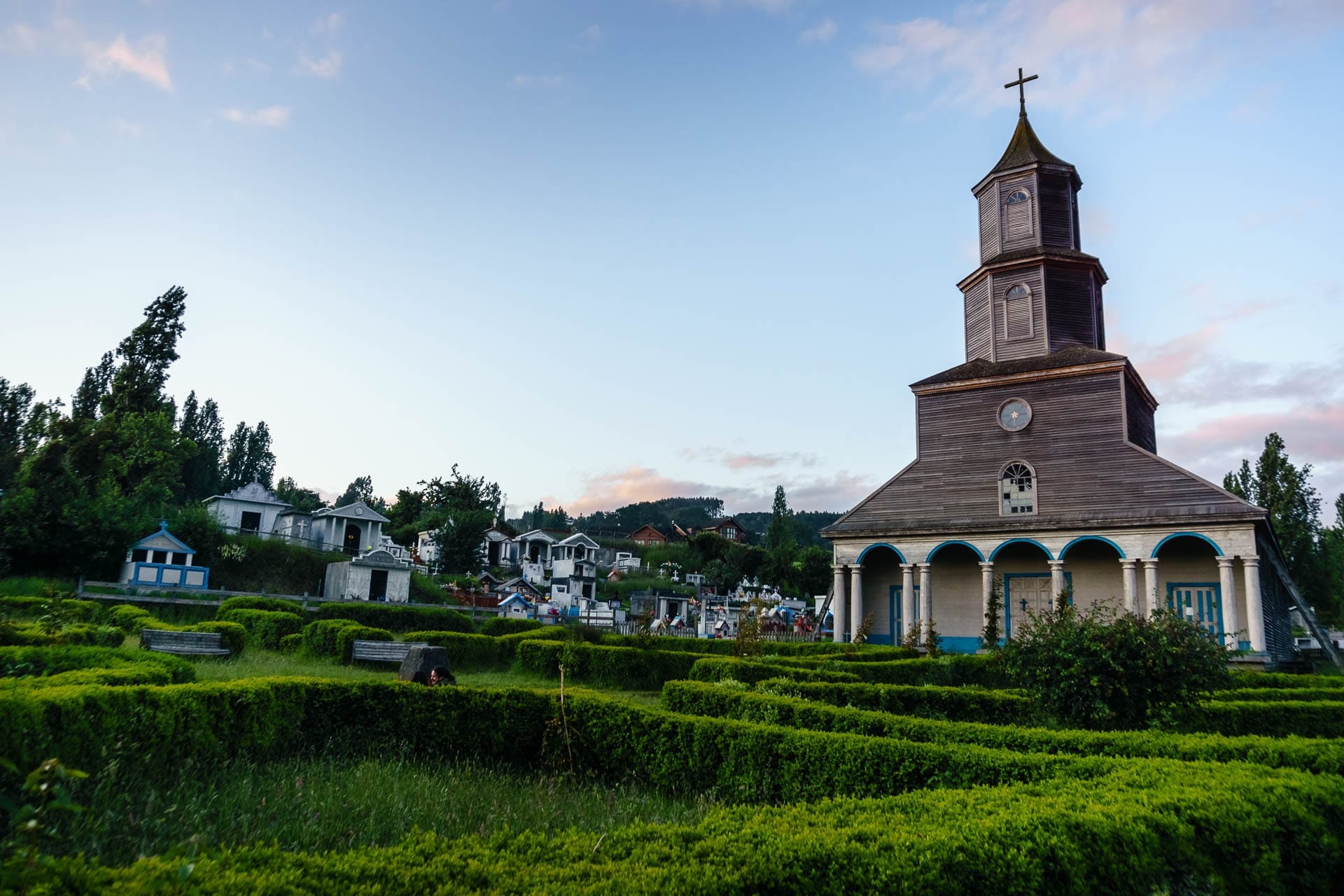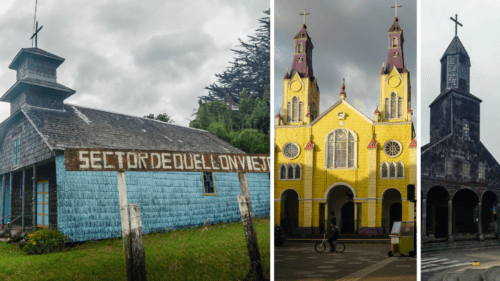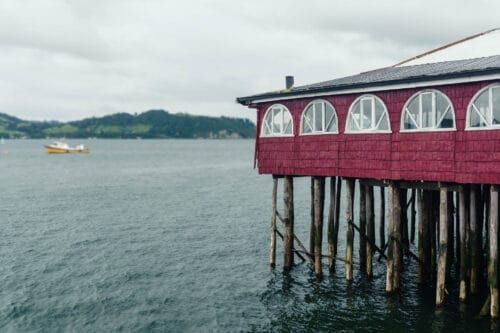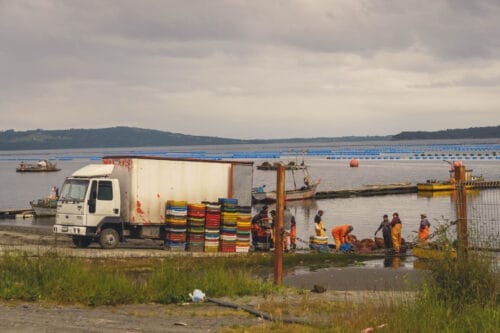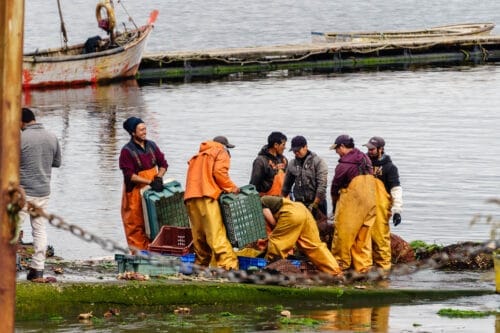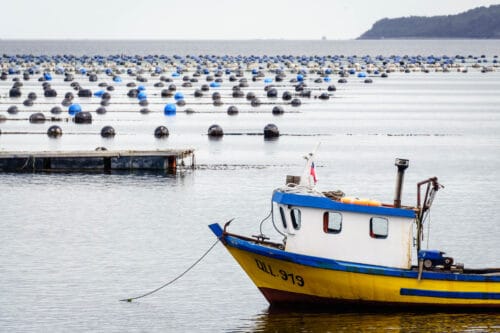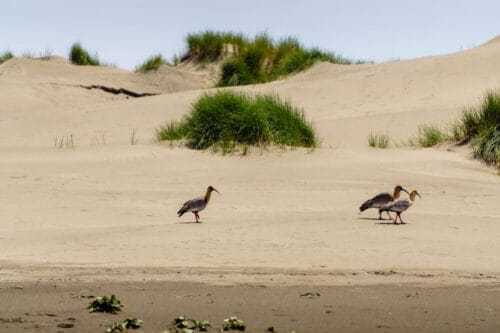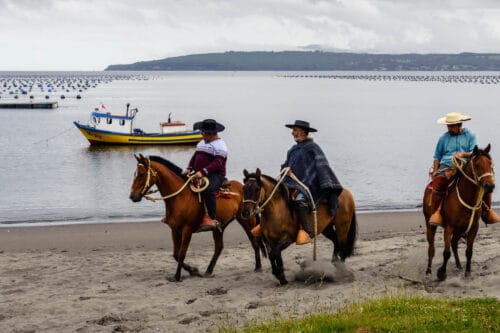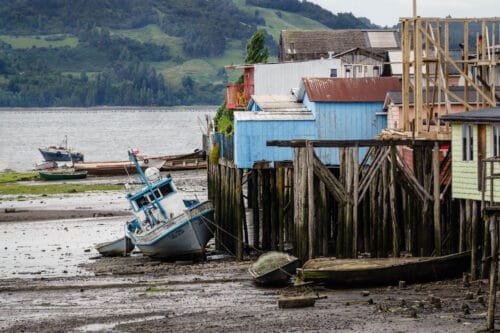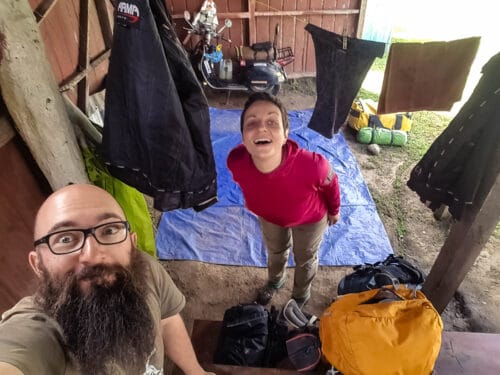We couldn't wait to finally visit the island of legends, mermaids, phantom ships and see its unique architectural tradition
After several months going up and down the Andes in Patagonia, we were at last next to the sea! We had the tickets in our hands and we were waiting for the ship to arrive at the port of Chaitén. We would soon sail towards Chiloé Island, the largest of the islands of the Chiloé Archipelago, off the coast of Chile. It was December – summer for the southern hemisphere – but it was too south for the weather to be hot. The sea was calm during the 4hour trip and the sky was covered with gray, heavy clouds that had lent their gloomy color to the water. As we were approaching, thick fog arose and only when we were almost at the port of Quellón we saw the city. It was as if it had just emerged from the sea, justifying the existence of local legends about mythical sea creatures and the phantom ship, the “Caleuche” that captivates fishermen and sailors with its enchanting music to enslave them...
Also read
Chiloé Island is a very unique place in terms of nature and culture. Its name is derived from the Mapuche word chillwe, meaning "seagull place", but seagulls are only one of the hundreds of species that inhabit the area. In part because of its physical isolation from the rest of Chile, Chiloé has a very special architecture and local culture, that make one's visit there an unforgettable experience. Even the physical appearance of locals and their accent is different from the rest of the country.
It didn't take long before we felt the unique atmosphere of the place. When we got off the ferry and rode our scooter towards the campsite where we were planning to stay for 1-2 days, it became clear that we were about to see a very distinct place. We arrived at the campsite that was on top of a hill just outside the city and admired the view of the houses and the colorful vessels lying on their side due to the low tide. Quellón is the southernmost big city of the island and the majority of its people work in aquaculture and in the fisheries. We couldn't wait to see the rest of the island, but before we hit the road again towards our next destination, we almost ritually rode to “Hito Cero” and took a photo of ourselves and our scooter at the southern end of the Panamerican Highway.
Support our trip
Even 1€ helps us stay on the road for longer and share more stories!
Make a contribution
If you like our stories, our photos & videos, you can help us continue...
JOIN THE WORLDVESPA CREW!On the day we left Quellón, the sun made its appearance and for the first time we could see the vivid green of the forests that cover the southern part of Chiloé as we were riding towards the Pacific Ocean and the great sand dunes on the western part of the island. The narrow paved road that leads to Cucao is absolute bliss for all kinds of bikers and scooterists. When the road reached its end, the view was fantastic: an amazing scenery of huge ocean waves, beaches, dunes and lagoons where hundreds of birds (such as the noisy “bandurria”) nest. And on the opposite side, lies the Chiloé National Park, where visitors can take a closer look at one of the island's forests, walking across its paths.
The beauty of nature always amazes us and being on an island with such a wide range of natural diversity is alone a great experience, but what a place would be without its human inhabitants? Before we set foot – or better, before we set wheels – on Chiloé island, we had already read about its unique cultural aspects and we weren't at all disappointed by what we saw during our first days there. However, as we were approaching the city of Castro, we realized that until that moment we had only seen a very small fragment of the whole picture. Castro, founded in 1576, is the capital of the Chiloé Province and it is on the eastern coast of central Chiloé Island. Today it is a big city, full of life, a center of social and financial activity. We set up our tent at a campsite just 4kms away from the city center and we rode our scooter downtown. Although Castro is a lively urban landscape, the low colorful wooden buildings give it a laid back rural look and the only thing that reminds you that you're in a big city is the heavy traffic during the rush hour.
I don't know how many pictures of Castro's buildings we took! The Chilotan architecture is a unique architectural style that is mainly restricted to the Chiloé Archipelago and a few neighboring areas of southern Chile. Partly because of its physical isolation from the rest of the country, it differs substantially from typical Chilean Spanish colonial architecture. Nearly all the houses and buildings in colonial Chiloé were built with wood, and wooden shingles were extensively employed. But what makes the whole picture even more distinct are the palafitos, the traditional wooden stilt houses which were common in many places in Chiloé. They are traditional fisherman's houses and some of them are preserved in the town district Gamboa in the west of the town, in a bay called Fiordo de Castro. Every time we passed by the two main palafito districts in Castro, we would stop just to sit on a bench and gaze at the tide that, depending on the time of the day, would reveal the whole height of the stilts and force the traditional boats to lie on their side, or it would fill the little bay with water and with black-necked swans that live in the area.
But the palafitos are not the only example of architectural uniqueness of the Archipelago. From the first day on the island, what caught our attention were the churches. While riding across the cities, towns and villages of the island, every now and then we could see a bell tower standing out from the rest of the buildings and we soon invented a new game: church spotting! The churches of Chiloé Archipelago are a unique architectural phenomenon in the Americas, designated UNESCO World Heritage Sites since 2000. They are made entirely in native timber with extensive use of wood shingles, from materials to resist the humid and rainy oceanic climate. Built in the 18th and 19th centuries, they represent the fusion of Spanish Jesuit and local native population's skill and traditions. What's more, the iconography in some of them is a perfect example of how the indigenous mythology mixes with the Spanish traditions: mythological sea creatures such as mermaids and anthropomorphic monsters and witches are portrayed next to Jesus in the murals of some of the churches, creating a distinctive local culture. The old wooden churches, together with the gray clouds and the ocean mist that covers the island most days of the year create an eerie, almost enchanted-like atmosphere. No doubt about how myths about witches and sea monsters are still prominent in the area.
We spent some time in the surprisingly quiet campsite outside Castro, chatting with the locals and tasting the amazing variety of dishes based on seafood, meat and potatoes. Chiloé is famous for its potatoes! In fact, after the Titicaca region of Peru and Bolivia, it is the geographical nucleus where the most different types of potatoes are found. But as the days were passing, we had to start our ride towards the north. Although there was some traffic on the main road, our ride was smooth and easy, so if we opened the throttle, we could arrive in Ancud – the second largest city of the island, in its northern part – in no time. However, we didn't want our trip across Chiloé to finish soon, so instead of going straightly north, we took a turn right and went towards Dalcahue, another small town on the east shore.
From Dalcahue, we boarded the ferry to the island of Quinchao. Quinchao is a small island, a great example of the peaceful, rural life of the Archipelago. During the siesta time, everything was closed and we had to wait until the local stores open again. Chilean people on the mainland and in the big cities don't close their stores at noon, but life in the Archipelago is more laid-back – no one seems to be in a hurry. When we got back to Chiloé, we decided to avoid the main road and we followed a back road to Ancud, passing from other villages, like Quemchi, a quiet fishing village – with the noise of our scooter's engine waking up the stray dogs that were sleeping on its beachfront.
In Ancud, we had to make a decision: we could take the ferry and leave the island crossing to Puerto Montt, or we could spend some more days trying to see the penguins that inhabit the northwest part of Chiloé. We had some friends waiting for us to spend Christmas with them on the mainland and we were very close to the port, so, we decided to say goodbye and see the penguins the next time we would be around!





